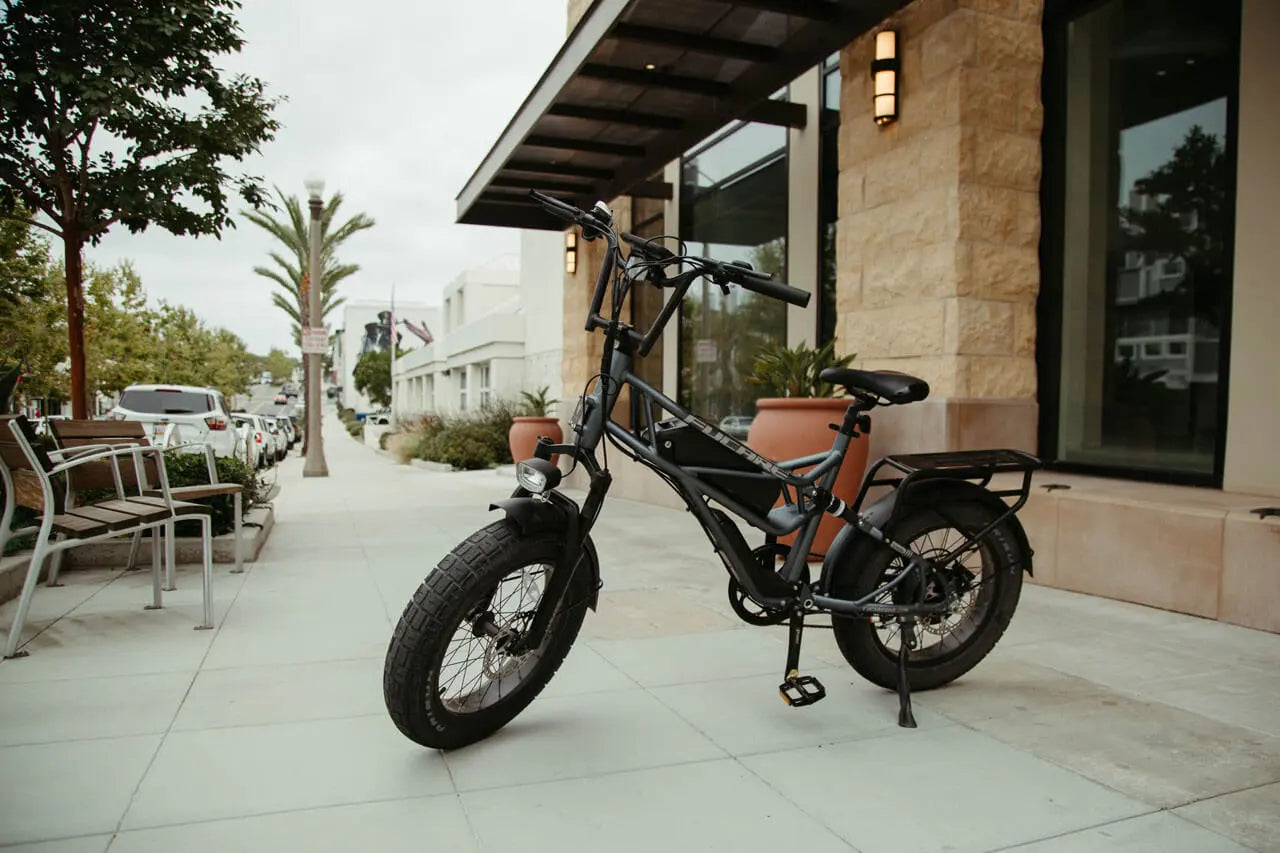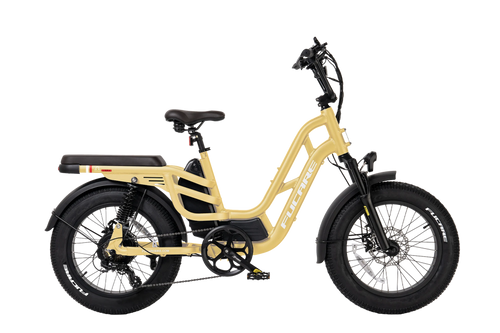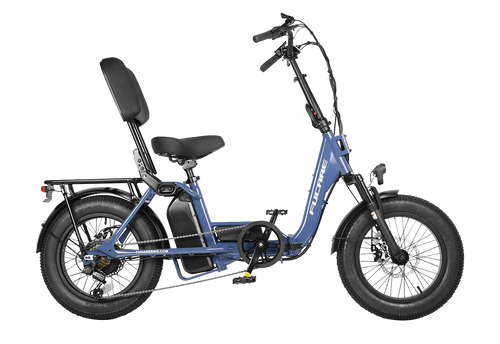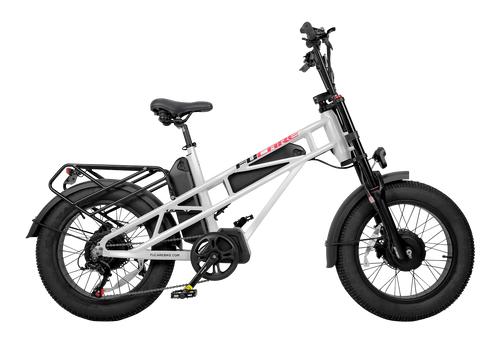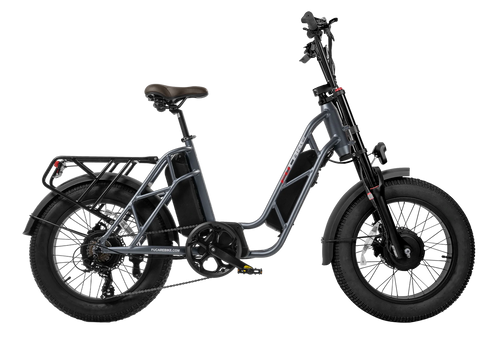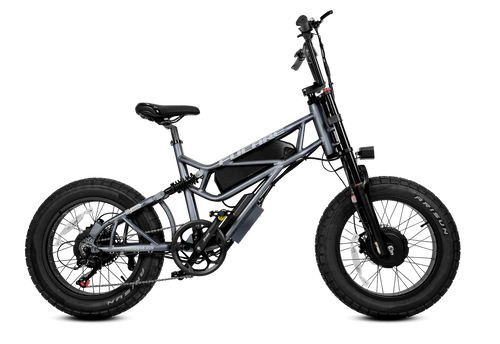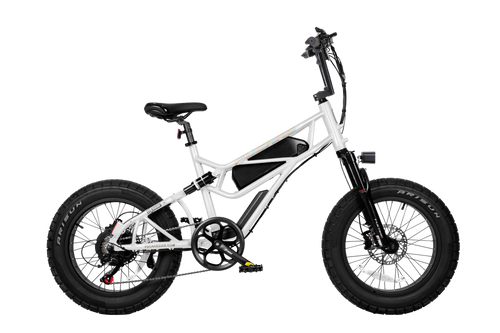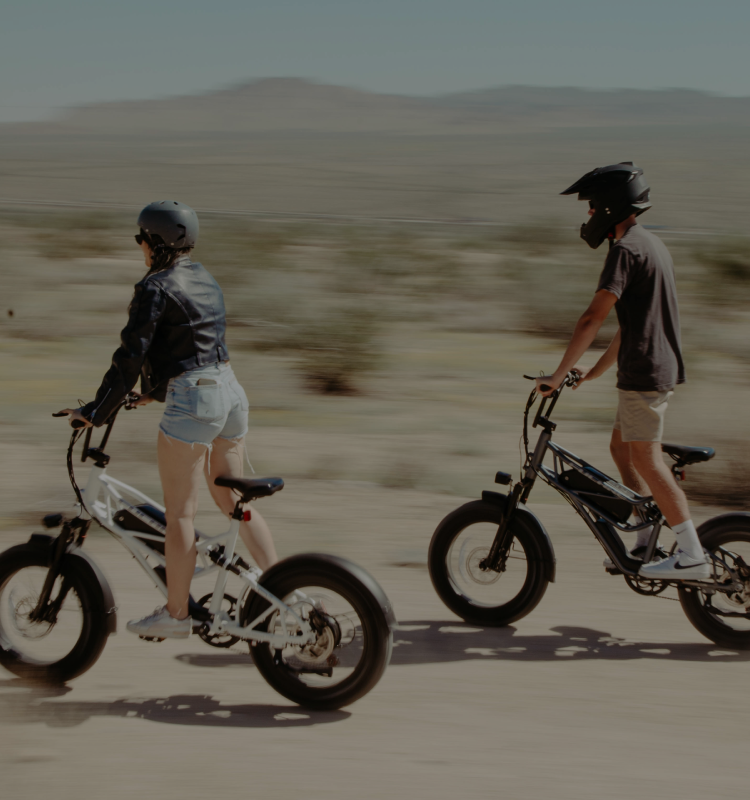Torque Sensor vs Cadence Sensor on Ebikes: An In-Depth Comparison
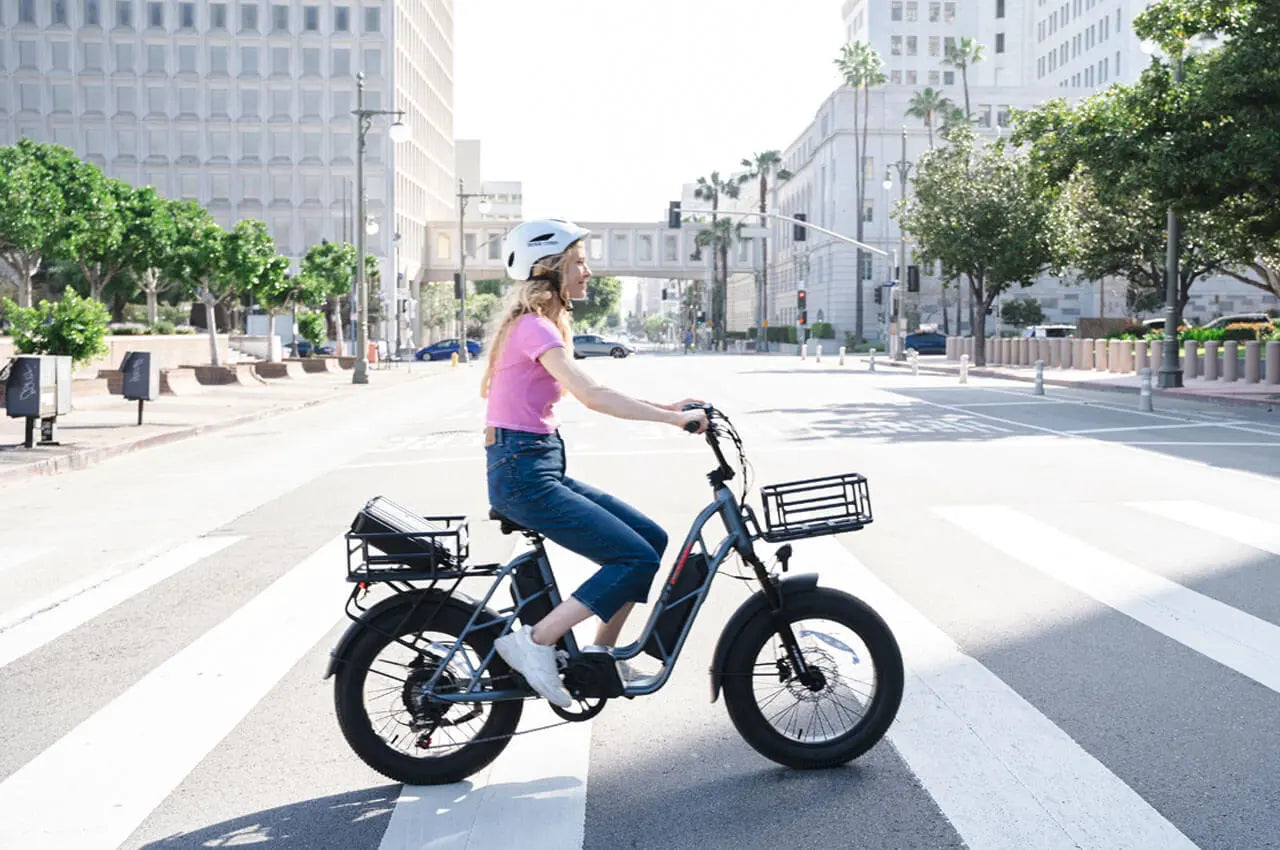
The main difference between torque and cadence sensors on e-bikes is in how they deliver assistance. Torque sensors adjust power based on pedaling force for a natural ride, while cadence sensors provide consistent assistance based on pedaling speed, making them easier to use but less intuitive.
In this post, we'll explore the differences between torque and cadence sensors, highlighting the pros and cons of each. By the end, you'll have a clearer understanding of what to expect from your electric bike and which sensor might best suit your riding style.
Key Differences Torque Sensor vs Cadence Sensor
When comparing torque sensors to cadence sensors, several key differences emerge:
Riding Experience
When it comes to mimicking the natural feel of traditional cycling, torque sensors reign supreme. Their ability to adjust assistance based on pedaling force creates a smooth and responsive ride, mirroring the familiar connection between effort and power delivery on a regular bike.
Conversely, cadence sensors provide a consistent level of assistance, which can feel less intuitive compared to the nuanced control offered by torque sensors.
Performance on Varied Terrains
Torque sensors truly shine in environments demanding frequent adjustments to power output. Their ability to adapt to changes in incline or where precise control is valuable, such as on trails or hilly terrains, makes them the preferred choice for these scenarios. C
adence sensors, however, might perform better on flat or urban landscapes where maintaining a consistent pace takes priority. Their on/off style of assistance can be advantageous for riders seeking a predictable feel on flat terrain.
Energy Efficiency
Torque sensors boast superior battery efficiency compared to cadence sensors. Their real-time modulation of the motor's output based on pedaling force translates to less wasted energy.
Cadence sensors, on the other hand, tend to draw a more constant amount of power, potentially reducing your overall range on a single charge.
Cost and Maintenance
Due to their simpler design, cadence sensors are generally more affordable to manufacture and require less maintenance. This translates to lower priced e-bikes, making them an attractive option for budget-conscious riders.
Conversely, the advanced mechanics of torque sensors often come with a higher initial cost and potentially greater maintenance considerations.
Torque Sensor on Ebikes
A torque sensor, at its core, is a sophisticated component designed to measure the rider's pedaling force and adjust the ebike's motor assistance accordingly. The principle behind its operation is straightforward yet ingenious; the harder you pedal, the more assistance you get from the motor. This creates a riding experience that closely mimics a traditional bike, but with a welcome boost of power.
Torque Sensor Benefits
Authenticity in Ride Feel: By mirroring the effort exerted, torque sensors create a ride experience that closely resembles traditional cycling, yet with an enhanced push.
Optimal Battery Utilization: The dynamic modulation of assistance based on pedaling force ensures that the battery's energy is used judiciously, extending the ebike's range.
Mastery over the Ride: The direct correlation between pedaling force and motor assistance grants riders unparalleled control, particularly beneficial across varied terrains.
Encouragement of Physical Exertion: For those seeking a blend of technology and physical workout, torque sensors offer an ideal platform, adjusting assistance as per the rider's exertion.
Limitations to Consider
Higher Pricing: The intricate technology embedded within torque sensors often reflects in a higher price point for ebikes equipped with this feature.
Demand for Rider Input: Individuals desiring a more laid-back cycling experience might find the requirement for consistent pedaling effort to be a deterrent.
Complexity in Upkeep: The advanced nature of torque sensing mechanisms may necessitate specialized maintenance, potentially elevating the cost of care.
Cadence Sensor on Ebikes
A cadence sensor on an e-bike acts like a pedaling speedometer. It doesn't care how hard you push down – a gentle spin or a forceful crank – it simply monitors the speed at which your legs rotate. Once you reach a predetermined pedaling rate, the sensor throws the switch, triggering the electric motor to whir to life and bathe you in a wave of assistive power.
Incorporating this type of sensor presents an economical approach to adding pedal assistance to the bicycle. However, the assistance provided by the pedal can sometimes lead to an experience that feels inconsistent, delayed, and not entirely intuitive.
Benefits of Cadence Sensors
Ease of Use: Cadence sensors keep things simple, making electric bikes user-friendly for everyone, even if you're just starting out with e-bikes.
Steady Support: With cadence sensors, you get a consistent helping hand, making your ride smooth and predictable, perfect for cruising on level ground.
Cost-Effective: Thanks to their straightforward design, cadence sensors help keep e-bike prices down, making them more accessible to a wider range of people.
Low Maintenance: The simplicity of cadence sensors means there's usually less that can go wrong, making upkeep easier and less of a headache.
Drawbacks of Cadence Sensors
Higher Battery Use: With cadence sensors, the motor keeps helping out no matter how hard you pedal, which might mean you find yourself charging the battery more often.
Feels Different: Some riders may find the disconnection between effort and assistance to detract from the traditional cycling experience.
Limited Fine-Tuning: Since the power boost is the same across the board, adjusting your ride to perfectly fit every type of path or hill can be tricky.
A Bit of a Wait: There's sometimes a small gap between when you start pedaling and when the motor kicks in, which could make tight turns or quick starts a little less smooth.
Choosing Between Torque and Cadence Sensors
Selecting the right sensor depends on various factors including personal preferences, riding styles, and specific needs:
Factor in Your Riding Style
Do you crave a dynamic and nuanced cycling experience that mirrors the feeling of a traditional bike? Then, an e-bike equipped with a torque sensor might be your ideal companion. Imagine pedaling with newfound confidence, the motor seamlessly mirroring your effort. With a torque sensor at the helm, the harder you push, the more assistance you receive. This intuitive response fosters a nuanced control that seasoned cyclists will appreciate. It's like having a responsive dance partner who anticipates your every move, creating a harmonious synergy between human and machine.
However, if you're seeking a straightforward e-bike experience that prioritizes ease of use and consistent assistance, then a cadence sensor might be your perfect match. Unlike torque sensors, which require intricate calculations based on pedaling force, cadence sensors focus on a single metric: your pedaling speed. As long as your legs are churning, the motor kicks in and offers a steady stream of support. This straightforward approach makes cadence sensors ideal for casual riders or those navigating flat terrains.
Consider Your Terrain
The landscape you envision conquering also plays a crucial role in selecting the ideal sensor. If you're an intrepid adventurer who thrives on challenging terrains – think winding mountain paths or unpredictable dirt tracks – then a torque sensor might be your best bet. Its nuanced control allows you to tailor your pedaling effort precisely, giving you the edge when navigating tricky climbs or loose surfaces. With a torque sensor, your e-bike becomes an extension of your own determination, helping you conquer even the most demanding terrain.
On the other hand, if your e-bike adventures primarily consist of leisurely cruises along flat, well-paved paths, a cadence sensor might suffice. The consistent support it delivers is perfectly suited for maintaining a comfortable cruising speed on predictable routes. So, before you embark on your e-bike odyssey, consider the type of terrain you'll be tackling – it can be a valuable compass in guiding your sensor selection.
Think About Your Budget
For buyers with tight budgets, the cost-effectiveness of cadence sensors makes them an attractive option. They offer a balance between performance and affordability, making them ideal for first-time e-bike buyers or those with budgetary constraints. After all, the thrill of exploring the world on two wheels shouldn't be gated by hefty price tags.
However, for those who prioritize efficiency and a seamless connection with their e-bike, a torque sensor beckons. Because the motor's output directly correlates with your pedaling force, there's no unnecessary energy expenditure. This translates to a longer battery life, allowing you to explore further and conquer more miles on a single charge. So, for those who crave an efficient and dynamic e-bike experience, a torque sensor offers a compelling proposition.
Final Thoughts
The dichotomy between torque and cadence sensors in ebikes encapsulates the broader theme of technological adaptation to human needs. Each system, with its distinct advantages and limitations, caters to different facets of the electric cycling experience. By carefully weighing these factors, cyclists can select an ebike that not only aligns with their riding style but also enhances their journey, making every ride a testament to the harmonious blend of human endeavor and technological innovation.
Continue reading
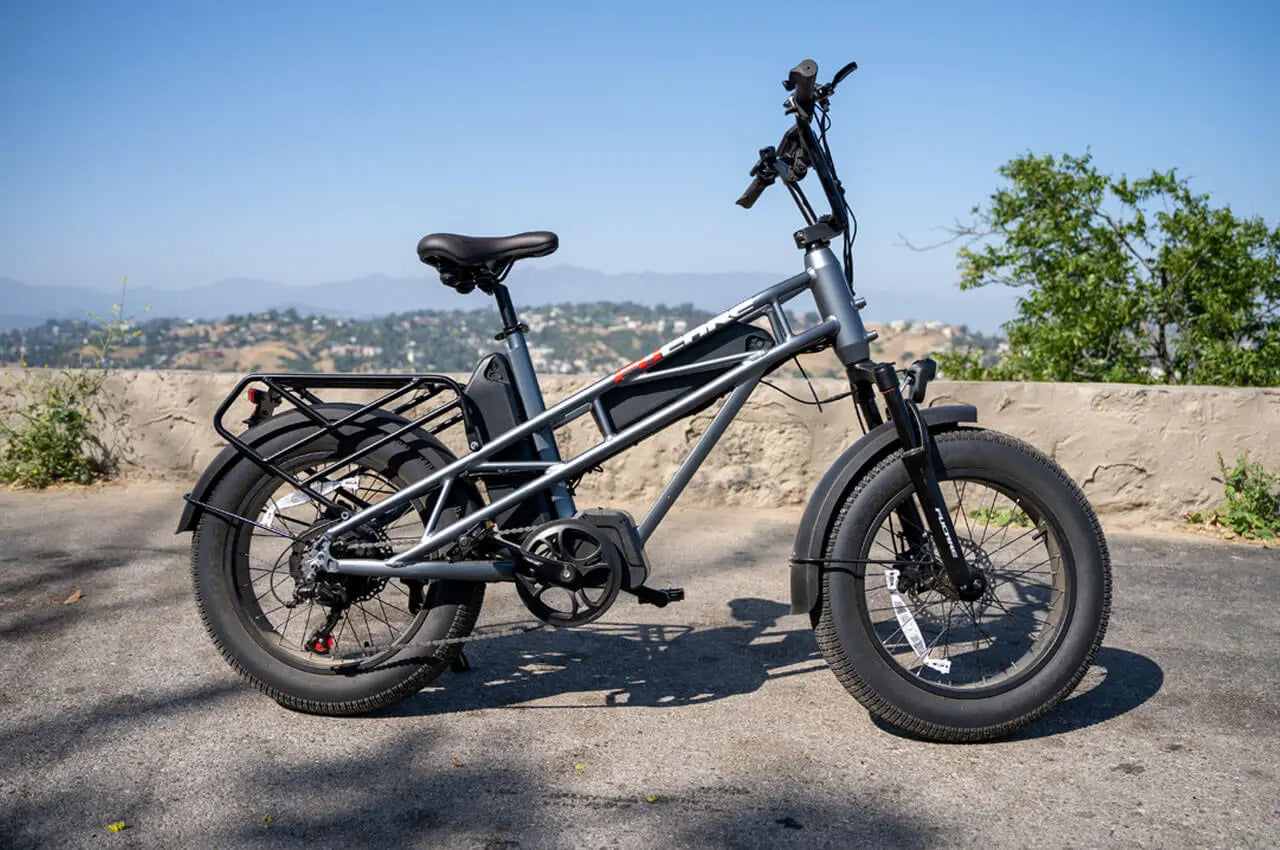
Get Your E-Bike Ready For Spring: The Ultimate Guide
